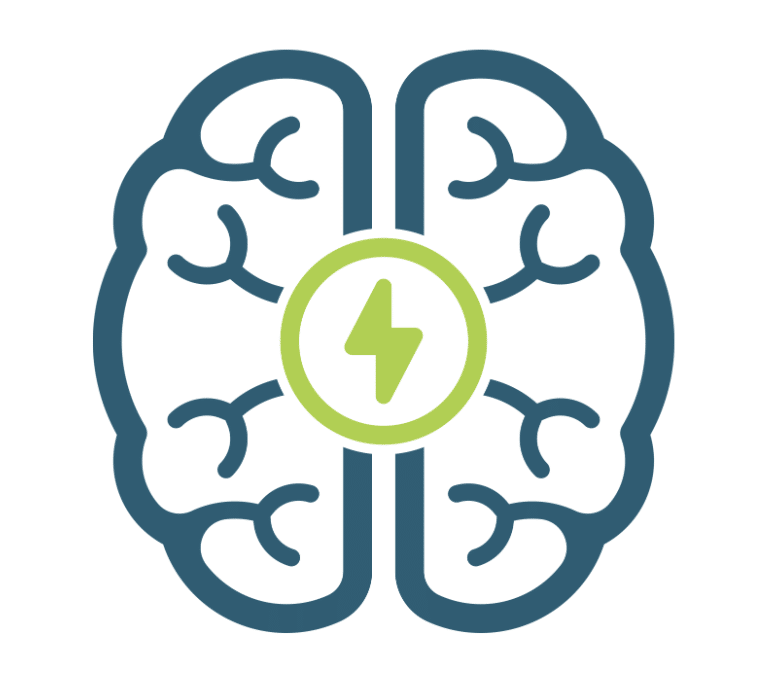This is the first blog in a series that explores high-leverage instructional practices that can enhance Tier 1 instruction, helping teachers design more accessible, inclusive, and equitable learning experiences. Each blog will focus on a different phase of lesson design—before, during, and after instruction—providing concrete strategies that can be applied, whether you are building a lesson from scratch or adapting an adopted curriculum. This blog focuses on strategies teachers can use BEFORE instruction.
Related Podcast Episode
Lesson planning is a lot like hosting a great party.
Imagine inviting a diverse group of friends over for an evening—co-workers, neighbors, old friends, and family. With such a mix of people, you wouldn’t wing it, right? Of course not! You would carefully consider the food to serve, find the perfect music playlist, and plan activities to keep everyone feeling engaged and comfortable.
Some guests might be new to the group, needing introductions and extra attention to feel included. Others might be regulars who dive right in, chatting with familiar faces. A successful party—like a well-designed lesson—requires thoughtful preparation, differentiation, and flexibility to ensure everyone can participate and enjoy the experience.
Just as the party host makes intentional choices to set the stage for a memorable evening, teachers must be just as intentional about designing lessons, allowing all students to engage actively and make academic progress. While there is no one-size-fits-all approach to designing a high-quality lesson, teachers can use research-based best practices to elevate Tier 1 instruction, making it more effective and impactful.
Before Instruction: Setting the Stage for Success
Effective instruction doesn’t start when the lesson begins. It starts before students engage with new content and information. Just like party planning, if you don’t plan the menu, set up your space, or think about your guest’s needs, the party will still happen, but it won’t be nearly as enjoyable for the people attending. The same is true for learning.
Before the instruction is the time to set the stage, ensuring that every student can access information, engage with concepts, and make meaning during the lesson. This phase is about intentional design and making sure students understand what they are learning, why it matters, and how it connects to what they already know.
Skipping or rushing through this phase is like throwing a party without considering who is coming. Some students will jump in effortlessly, while others will feel like outsiders, unsure of what is happening or how to participate. But, when we invest in purposeful planning before the instruction, we create an experience where every student feels welcomed, prepared, supported, and ready to engage. This ensures that the learning is not just accessible but that it is also meaningful.
1. Articulate Clear Standards-aligned Learning Objectives
The first step to designing high-quality Tier 1 instruction is articulating a clear destination for the learning experience. Not only does this help teachers design an effective learning pathway to guide students toward the desired learning objective, but it should be something they can share directly with students so they understand why they are being asked to complete specific learning activities.
- What is it that students will know, understand, or be able to do at the end of this lesson or sequence of lessons?
- Can you articulate these learning objectives in clear, student-friendly language you can share with learners?
Subject-area Standard
CCSS.ELA-LITERACY.RI.6.8:
Trace and evaluate the argument and specific claims in a text, distinguishing claims that are supported by reasons and evidence from claims that are not.
Student-friendly Learning Objective
Today, we’ll learn how to spot an author’s argument in a nonfiction text and decide whether their claims are backed up with strong evidence. By the end of the lesson, you’ll be able to explain how an author supports their argument and why that matters!
🤖 AI Prompt to Support Teachers: Rewrite [insert standard] in simple, student-friendly language that a [insert gradea] can understand. Keep it clear and engaging.
2. Assess & Activate Prior Knowledge
Before introducing new content, assessing what students already know or can do and activating relevant prior knowledge to create more meaningful connections between old and new information in the student’s knowledge framework is critical. This helps students to anchor new learning to existing knowledge, improving retention and engagement.
Not all students start with the same background knowledge or vocabulary, so teachers can differentiate this step by providing support for those who need pre-teaching and offering extension activities for those who already have a strong foundation on which to build.
- How will you address what students already know before introducing new content?
- How can you help students make connections between their prior knowledge and the new information?
Pre-Assessment Strategies
Quick Writes or Brain Dumps: Ask students to write down or capture an audio recording of everything students know about a topic in 1-3 minutes.
Entrance Tickets: Begin the class by asking students to answer a question, define key vocabulary, make a comparison, or solve a problem to assess what they know or can do.
Concept Sorts: Give students a list of words, phrases, images, graphs, etc., and ask them to categorize them into three piles—know well, heard before, and new to me.
Pre-assessment Quiz: Use tools like Google Forms or Kahoot to do a quick digital check of students’ prior knowledge.
Activating Prior Knowledge Strategies
Anticipation Guide: Give students true/false or agree/disagree statements about the key concepts and have them write or debate them before instruction.
Think-Pair-Share: Ask an open-ended warm-up question related to the lesson’s new concept or material, allowing students time to discuss and make connections.
Concept Mapping: Have students draw a mind map of what they know about a topic with branches of related ideas. Teachers can provide students with a list of terms to work with.
See, Think, Wonder with Media: Show students an image, graphic, map, or short video clip related to the topic and ask students to complete the see, think, wonder thinking routine.
🤖 AI Prompts to Support Teachers:
- What are three effective ways I can assess what [grade level] students already know about [insert topic]? Provide strategies that are quick and engaging and help me identify knowledge gaps before instruction.
- What are three engaging ways I can help [grade level] students activate their prior knowledge about [insert topic] before introducing new content? Provide strategies that encourage discussion, connection-making, or prediction.
- Generate a [multiple-choice/open-ended/true or false] pre-assessment question that will help me gauge how much [grade level] students already know about [insert topic]. Keep it clear and aligned to [insert standard or learning goal].
- Generate a set of 4-5 agree/disagree or true/false statements that I can use in an anticipation guide to get [grade level] students thinking about [insert topic] before the lesson begins.
3. Differentiate Entry Points Based on Prior Knowledge
Since not all students enter a lesson with the same background knowledge or vocabulary, some are ready to dive in, while others need pre-teaching and support to access new learning. If we treat every student as if they are starting from the same place, we risk leaving some behind while alienating others. Students lacking background knowledge or key vocabulary to access new information will feel frustrated and lost. By contrast, those with significant prior knowledge and vocabulary may become bored and disengage from the material since it feels repetitive and unnecessary.
Pathway #1: Pre-teaching Group
Vocabulary Instruction: Introduce key terms related to the lesson or content using images, diagrams, or real-world examples. Use the Frayer Model or a word wall to help students define the new vocabulary in their own words.
Anchor New Learning in Prior Knowledge: Model how the new concept connects to something students may already know. (e.g., This is similar to…)
Building Background Activity: Provide students with instruction or resources to help them create a foundation of knowledge on which the instruction can build to ensure students can access the new information (e.g., video, text, explicit instruction, demonstration, modeling session).
Hands-on Exploration with Manipulatives: Provide interactive materials (e.g., number lines, maps, sentence strips, models) and let students physically engage with the concept.
Pathway #2: Extension Group
Inquiry and Research Extension: Invite students to research a high-interest question related to the topic or present them with a real-world application to explore. (e.g., Find a real-world example of [concept] in action and explain how it works.)
Create a Model or Analogy: Ask students to explain a concept by creating a model, drawing, or analogy. (e.g., Create a visual or analogy to show how this concept works.)
Debate or Defend a Position: Provide students with a series of statements related to the content of the lesson or lessons and ask them to engage in a discussion with a group about their position on each or provide them another pathway to present their position (e.g., drawing, concept map, writing).
Reciprocal Teaching Strategy with Media: Give a group time to read an article or listen to a podcast on a related, high-interest topic to use the reciprocal teaching protocol to discuss it in depth.
🤖 AI Prompts to Support Teachers:
- Rewrite the following standard in simple, student-friendly language that a [insert grade level] student can understand. Keep it clear, concise, and engaging. [Insert standard].
- What are three effective ways I can help build background and/or pre-teach vocabulary for [grade level] students who may not know anything about [insert standard or topic]? Provide a collection of strategies that are engaging and interactive.
- What is a meaningful extension activity for [grade level] students with background knowledge on [insert standard or topic]? Provide an idea that encourages deeper thinking, real-world application, or creative problem-solving.
Wrap-Up: The Power of Intentional Design
When we take the time to intentionally design the learning experiences before the instruction begins, we set the stage for more meaningful, accessible, and engaging learning for all students. Assessing and activating prior knowledge ensures that students can make connections between what they already know and what they are about to learn. Differentiating entry points based on prior knowledge allows teachers to provide the right level of support or challenge, keeping every student engaged in rigorous, purposeful learning rather than feeling lost or unchallenged.
For teachers working with an adopted curriculum, these may be intentional additions that help bridge gaps between what the instructional material provides and what the students actually need. The reality is that no single curriculum is a perfect fit for every group of students. Strong instructional design requires knowing when and how to layer in these best practices to ensure every student can progress toward firm standards-aligned learning goals. That’s why I’ve included AI prompts—to help teachers generate customized resources and scaffolds, using AI as a thought partner rather than a one-size-fits-all solution.
By investing in these critical before-instruction moves, teachers create classrooms where every student has an on-ramp to learning, where gaps are addressed before they widen, and where no student is left behind or stuck waiting. However, strong Tier 1 instruction doesn’t stop at preparation—it is also about how we deliver learning experiences that are dynamic, student-centered, and responsive.
In the next post in this series, we’ll shift our focus to what happens during instruction, exploring strategies educators can use to elevate their teaching, actively engage students in meaning-making, and create more equitable learning environments. The goal is to maximize the impact and effectiveness of Tier 1 instruction, reducing the need for Tier 2 support or Tier 3 intervention.
Want to read more about MTSS? Check out my collection of MTSS-related blogs!





One response
Intentional Design allows the student to learn at their own pace. Our job as teachers is to provide what the students need to be successful. The ” One size fits all” doesn’t belong in education. As adults, we want to be treated as adults individually, and the same should be given to our students. Once again, technology is striving to be at the forefront of assisting with student education. CBT (computer-based training) proves to be helpful during time education. Teachers don’t hallway have time to grade individual papers and then give feedback to each student personally. CBT can develop an assessment based on curriculum grade and the result and create a challenging, rigorous lesson plan that will allow the students to work at their own pace and keep them engaged.